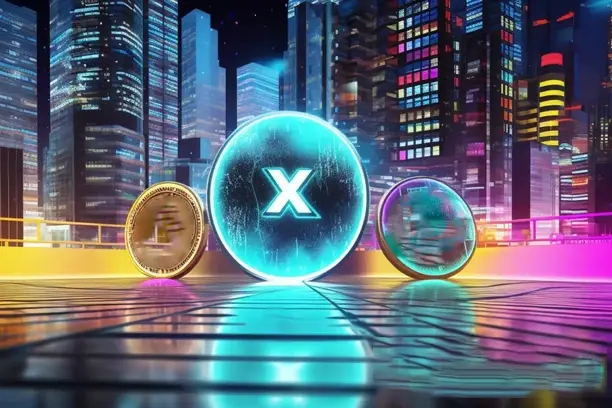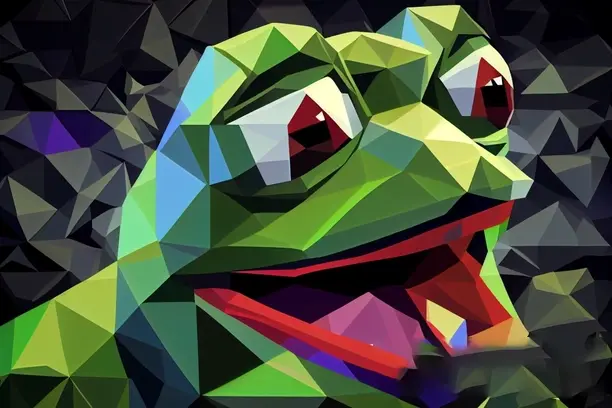NFT minting is the process of transforming digital works into tamper-proof tokens on the blockchain, a process that allows creators to obtain copyright protection and sales rights on a decentralized platform. In this article, we will introduce the concept, working principle and operational steps of NFT minting in detail through easy-to-understand language. Whether you are a digital artist interested in NFT or a general reader looking to understand this emerging technology, you will be able to grasp the core points of NFT minting through this article.

What is NFT Casting?
NFT (non-homogenized tokens) are digital assets based on blockchain technology that can represent anything unique, such as artwork, videos, music, etc. NFT minting, on the other hand, is the process of transforming digital works into NFTs. Through minting, creators can fix the ownership, uniqueness and authenticity of their works on the blockchain, ensuring that each NFT is unrepeatable.
The process of casting NFTs involves creators uploading their digital works to the blockchain platform, filling in relevant information (e.g., titles, descriptions, images, etc.), and paying a certain casting fee. After these operations, the work becomes a unique NFT and has a unique identifier on the blockchain that cannot be tampered with or copied.
How NFT Casting Works
Blockchain technical support
The core technology behind NFT casting is blockchain. Blockchain is a decentralized distributed ledger, and its biggest advantage is that the data is untamperable and open and transparent. Therefore, when artworks or other digital works are cast through NFT, all their information will be permanently recorded on the blockchain, which guarantees the uniqueness and authenticity of the works.
Smart Contracts and the Casting Process
The NFT casting process is usually realized through smart contracts. Smart contracts are automated protocols that run on the blockchain and are capable of executing the content of the contract according to predefined rules. When a creator mints an NFT, the smart contract automatically generates a unique token and associates it with the creator's work. The smart contract will also be responsible for setting the ownership, transfer rules, and sales conditions of the work.
When casting an NFT, the creator is required to submit a piece of metadata about the work. This metadata includes:
- Title, description, creator information, etc. of the work.
- Digital files of the work (e.g., images, video, audio, etc.).
- Blockchain handling fee at the time of casting (usually paid in ETH).
Casting platforms
Most of the NFT casting operations are performed on NFT marketplaces. The more common NFT platforms are OpenSea, Rarible, Foundation, etc. These platforms provide convenient casting tools. Creators only need to connect their wallets, select the casting option, fill in the information of the work, and pay the fee, and then the work will be successfully cast into NFT and uplinked.

Steps in NFT Casting
Step 1: Prepare digital artwork
Creators need to prepare digital works. These works can be images, videos, audio or other forms of digital content. The quality and creativity of the work directly affects its NFT value, so creators need to be careful when choosing their work.
Step 2: Selection of casting platform
Choosing an NFT casting platform is very important, with fees, features and user groups varying from platform to platform. For example, the OpenSea platform supports a variety of blockchains, while the Rarible platform is more focused on the art market. Therefore, creators can choose the right platform according to their needs.
Step 3: Connect the wallet
Before casting NFTs, creators need to have a digital wallet (e.g. MetaMask, Coinbase Wallet, etc.). Through the wallet, the creator can interact with the minting platform and pay the minting fees. The wallet needs to hold a certain amount of cryptocurrency (usually ETH) to pay the transaction fees.
Step 4: Upload your work and fill in your information
After uploading the work, the creator needs to fill in the information about the work, such as title, description, attributes, and so on. This information will help buyers understand the background of the work and the creator's intention. The uniqueness of the work can also be further confirmed by these descriptions.
Step 5: Pay for casting
There is a cost associated with casting NFTs, often referred to as a "gas fee". This fee fluctuates with network congestion. Once the payment is made, the work is officially minted as an NFT and a unique token is generated on the blockchain.
Step 6: Sales and Transactions
Once casting is complete, creators can choose to put the NFT on the marketplace for sale, or auction it off. Through the decentralized NFT platform, works can be displayed and purchased globally, and creators can set royalties through smart contracts to ensure that they receive a percentage of the proceeds from each resale.
Advantages and Challenges of NFT Casting
dominance
- Protection of creators' rights: Through the NFT, creators are able to clarify the ownership and copyright of their works and avoid piracy and copying.
- global market: The decentralized nature of the NFT platform enables creators to showcase their work to buyers around the world, breaking down geographic and platform constraints.
- royalty income: Creators can set royalties on each NFT resale, resulting in long-term gains.
challenge
- high cost: The gas fee for NFT casting can be high and can spike especially when the network is busy.
- Market instability: The NFT market is currently in a developmental stage where prices are volatile and creators may be exposed to the risk of price uncertainty.
- environmental issue: The energy consumption of blockchain technology is an ongoing controversial issue, and casting NFTs consumes a lot of energy.
summarize
NFT minting is a process of transforming digital works into unique tokens on the blockchain, which provides creators with the opportunity to protect their copyrights and generate revenue. Minting NFTs also comes with certain challenges, such as high fees and market uncertainty. Whether as a creator or investor, understanding how NFT minting works and the process will help you better capitalize on the opportunities and risks of this emerging market.







